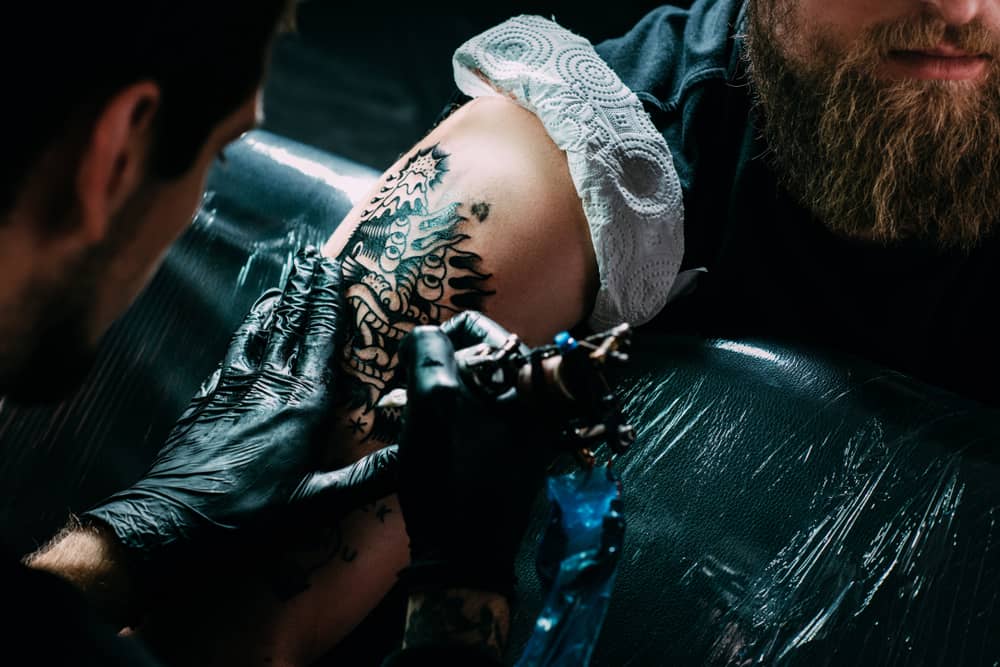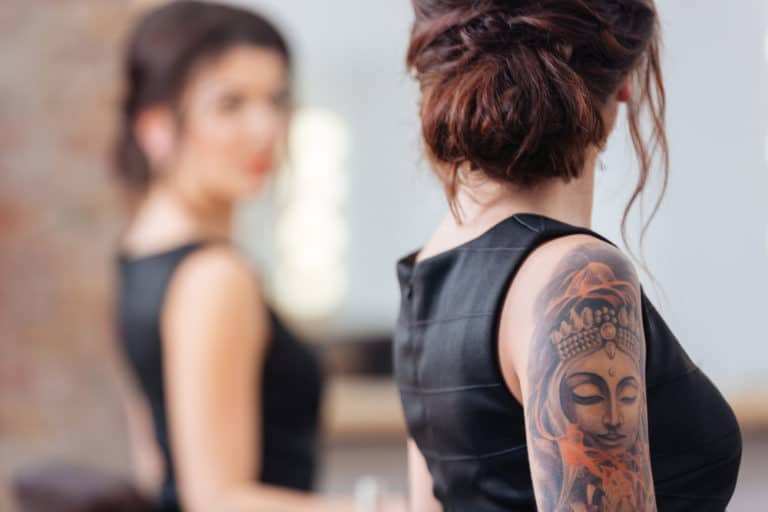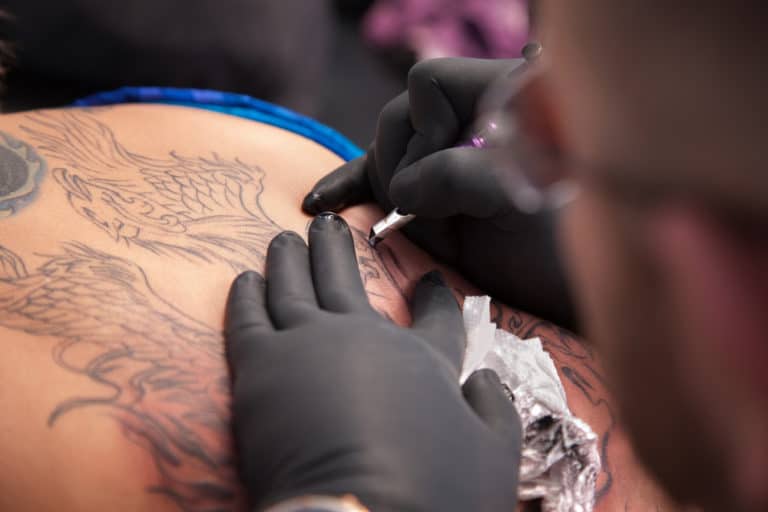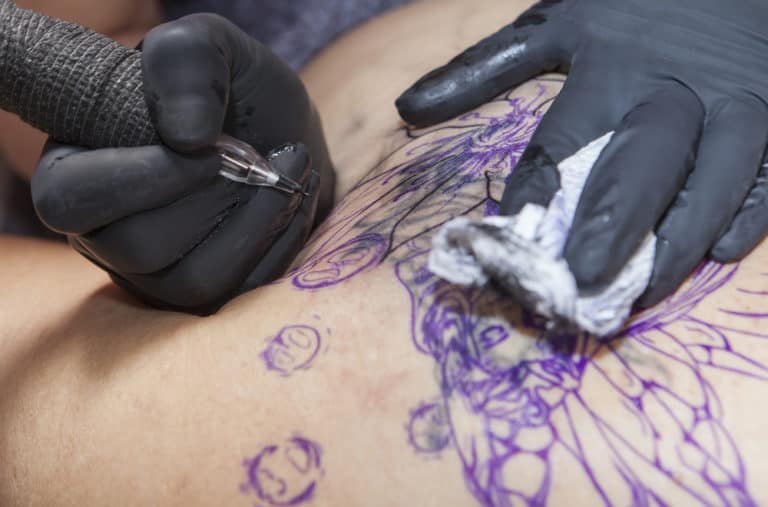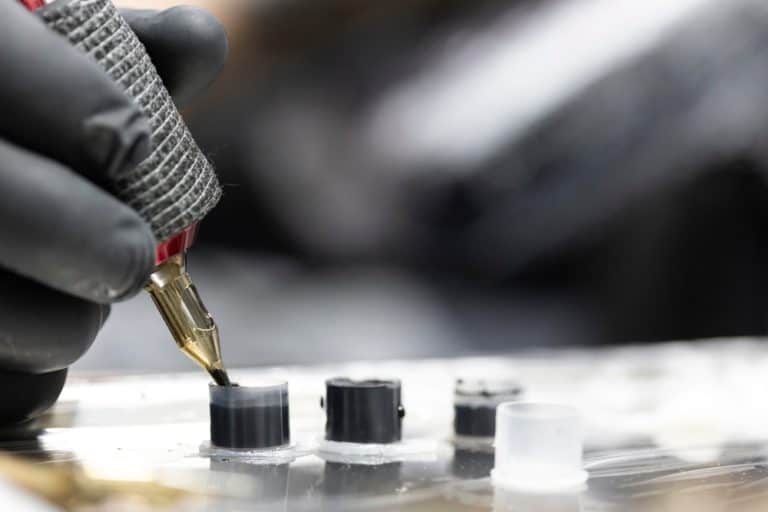What Colors Hold Best In Tattoos?
Various factors determine how a tattoo looks; from the design to the size and the placement, nothing is as crucial as your choice of color – or lack thereof. Colored tattoos have steadily been rising in popularity ever since their first appearance on skin, so it’s only natural to want a part of the action. But tattoos are permanent, and you want to make the best decision you can, so what colors hold best in tattoos?
Black and gray tattoos will hold the best in all skin tones, in addition to lasting the longest and needing the least touch-ups in comparison to other colors. All vibrant and pastel colors appear different in varying skin tones and are more susceptible to losing their pigment and fading faster.
Every tattoo enthusiast undoubtedly has their favorite aesthetic when it comes to tattoos. These aesthetics can rely on the style of tattoos or, more importantly, the color. If you’re a tattoo collector with an ongoing theme from head to toe, or if you are new to tattoos or are content with the handful you have, everyone must take color into great consideration.
What Colors Hold Best In Tattoos?
When deciding what colors and pigments to use in your tattoos, it’s helpful to know how different colors take to skin, how long they last, and which ones will require more maintenance. No tattoo type is superior; whether they are black lined and grey shaded or full of color, it all depends on your taste.
As you may have guessed, black and gray ink are the longest-lasting ink colors, holding better than other colors over long periods. The density and boldness of these dark shades make them less prone to fading.
The ink color that fades the fastest is white; thus, white tattoos require the most frequent touch-ups. Fading is also a common problem among vibrant and pastel colors like yellow, pink, light blue, and green.
The History Of Tattoo Colors
The first colored tattoos are thought to have been done in Ancient Egypt, with any previous tattoos done in black. The Ancient Roman and Ancient Inuit people are also believed to have had colored tattoos based on artifacts and relics found from that time period.
Color tattoos became more notable in 17th century Japan. Previous to this, tattoos were thought of as a punishment amongst the Japanese. Ever since their recognition as an art form, Japanese tattoos were often, and are still to this day, filled with bold and vibrant colors.
In relation to the advances in tattoo ink, color tattoos became popular in America and the UK towards the end of the 19th century. However, people only used very basic forms of tattoo color, with most artworks using red, blue, yellow, or green.
Only in the last few decades has a lot of time and money gone into developing high-quality tattoo ink and colors. These are much safer and easier to work with, and cruelty-free and vegan options are available. Additionally, there are at least ten inks for every color. New tattoo ink technology has also minimized the probability of allergic reactions, in addition to helping tattoos last longer.
Everything You Need To Consider With Tattoo Colors
Just like with any piece of art, the colors you choose are important. Different colors can change the entire effect of the tattoo and help it capture or replicate the original idea or image. But there are multiple aspects to consider when looking at colored tattoos.
- Tattoo Style
Several tattoo styles gravitate towards bright and bold ink, from watercolor to traditional, Japanese, and illustrative work. These styles rely on color to bring the piece to life with their well-thought-out composition and gradients.
Contrastingly, many styles such as realism, portrait, tribal, and blackwork prove that the monochrome black and gray tattoos aren’t as boring as they seem. These styles may not use color ink, but they are capable of creating stunning pictures and intricate patterns.
- Tattoo Size
Next, you must think of the size of the tattoo you want. A problem with a small piece is that colors can blend and muddy together. But big pieces usually work brilliantly with color as the shades stand out easily and are visually more apparent.
- Placement
Like with every tattoo, placement is crucial. Your tattoo’s placement can affect how the color looks and how long it holds. This is because different areas are susceptible to aging, weight changes, sun exposure, and more aspects.
Your tattoo artist will give you their professional opinion on the ideal placement of the tattoo so that it is able to retain its shape and color for as long as possible. Further, they will know how to position the tattoo so that it flows with the movement of your body and muscles and has a visually natural composition.
- Skin Tone
Further, it is vital to consider your skin tone and how it will affect the final look of the tattoo, and how long the ink will last. Keep in mind that colored tattoos look different once they heal. While some colors may work exceptionally well on one skin tone, they may not have the same effect on another.
- Sun Exposure
Tattoo ink lies in the dermis layer of your skin right underneath your melanocyte cells – the cells which are responsible for melanin production. When your skin is exposed to the sun, these cells will secrete melanin; this is what gives you a tan. However, when melanin mixes with the pink pigment in your skin, the tattoo will dull.
Thus, consider how much time you spend in the sun because this can significantly change the tone of your tattoo and determine how long it lasts.
- Tattoo Removal
In case you’re worried about how you’ll feel about the tattoo in the future, some colors are more challenging to remove than others. Generally, vivid and non-organic colors will be difficult to remove. The colors most resistant to laser tattoo removal are yellow, red, orange, and green pigments.
- Ink Safety
Ever since the popularity of tattoos boomed, ink development has sky-rocketed from a more extensive selection of colors like neons, vibrant shades, and pastels to something unique like memorial art, where you mix a bit of a loved one’s ashes in the ink. But the main priority with all this new ink has been to make it easier to work with, last longer, and safer.
However, some colors are still somewhat dangerous. For example, neon inks are loaded with chemicals and mercury, with the reds being amongst the worst as they also contain iron oxide and cadmium – all are highly toxic. The basics are generally the safest option. While black is the least risky, blues and greens that contain copper phthalocyanine pigments are also considered safe.
Some parlors mix their own inks and colors, but they recommend using branded inks that list their ingredients for general safety. Moreover, some studios have natural alternatives, like yellows and blues that are turmeric- and indigo-based.

How To Choose The Best Tattoo Colors For Your Skin Tone
You probably think of skin in the simple terms of color. However, your skin is much more complex than you may have first thought when it comes to tattoos. You must look beyond just the color and tone of your skin and consider what is underneath – the undertone.
Skin Complexion And Knowing Your Undertone
There are two main terms used when talking about the color of skin:
- Skin Tone (Overtone): Skin tone refers to the actual color of your skin.
- Skin Undertone: Undertones refer to if your skin is warm, cool, or neutral.
Finding the right pigment for your skin is about matching the ink color with your skin’s undertone. But first, it might help to determine your undertone if you’re unsure of which it is.
- Cool Undertones describe people with a blueish, pink, or ruddy complexion. These people tend to have veins that appear blue.
- Warm Undertones describe people with a yellow, peachy, or golden complexion. These people tend to have veins that appear green.
- Neutral Undertones – This means a person has an even complexion with an undertone that aligns with the overtone. These people tend to have no distinguishable vein color.
Skin is extremely complex, with many different factors contributing to each individual’s unique color. Three main biological chemicals determine your skin color: Hemoglobin, which is red; Melanin, which protects your skin from the sun and is brown or a red-yellow; Carotene, which is an orange-yellow.
It is the amount of melanin in your skin which determines your undertone. The less melanin you have, the cooler your complexion. The more melanin you have, the warmer your complexion. The amount of hemoglobin and carotene you possess determines the variation in your skin’s undertone.
Why Undertone Matters
Your undertone is an extremely important factor that will affect your choices when selecting the colors for your tattoo. You’re probably wondering why undertone is such a big deal, and here’s why:
There are three layers in your skin, the epidermis, dermis, and hypodermis. Tattoo ink should always be injected into the dermis layer. If it is injected into the epidermis, then the ink will simply not stay in your skin, and if it is injected into the hypodermis, the lines will blow out and look blurred.
Just like your hemoglobin, your tattoo ink will be covered by a layer of melanin in the dermis layer of your skin. Meaning that your undertone will essentially be sitting above your tattoo and serve as a type of filter for the ink’s color. So, the difference in how colors present aren’t to do with how the skin takes the ink, but how the melanin concentration affects your skin’s undertone.
This is why your skin tone has such a significant effect on how the color of your tattoo will look.
The Best Colors For Your Undertone
Now that you know your undertone and understand how it can affect colored tattoos, what are your best pigment options?
- Small Concentration (Cool Undertone) – A cool undertone means there is a minimal amount of melatonin standing between your tattoo and the surface of your skin. Thus, any ink pigment should show well, but bold reds and blues will present the best since they match your natural undertone.
- Higher Concentration (Warm Undertone) – Since more melanin above the tattoo will affect the inks pigment, it can be trickier to work with your skin’s natural filter. It is best to stick with warmer pigments that match the amount of melanin in your complexion. Thus, the darker your skin, the darker colors you should choose.
Generally, lighter or significantly darker shades than your skin tone will show best.
Skin Tone Also Matters
While undertone is a largely underappreciated factor when picking tattoo colors, it doesn’t mean that your overall skin tone should be ignored. There will always be specific colors that show up better on some skin tones than others.
- Light Skin: Red, white, and purple show up very well.
- Tanned Skin: Blue, green, and orange stand out a lot.
- Dark Skin: Black, dark red, deep blue, and other dark colors will show the best.
Furthermore, certain skin conditions, like vitiligo, affect the pigmentation of your skin. In these cases, it would be best to consult an experienced tattoo artist who will be able to work under these special conditions.
Conclusion
Needless to say, color is a crucial factor in the decision process of getting a tattoo. You must consider all of the effecting variables and discuss them with your tattoo artist to determine that the colors will suit you and complement each other and the design.
You may not always get the exact palette you originally thought, but you’ll be grateful when the beautiful compromise you come up with withstands the test of time.

